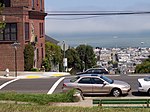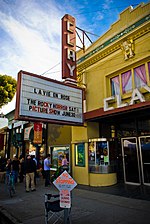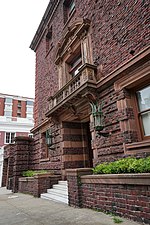Fillmore Street Tunnel

The Fillmore Street Tunnel was a proposed double-bore tunnel approximately 3⁄4 mile (1.2 km) long in San Francisco, California which would have carried Fillmore Street and a new streetcar line underneath Pacific Heights and Russian Hill. The proposed tunnel would have connected the Western Addition and Fillmore Districts, near the south portal at Sutter Street, with Marina and Cow Hollow, near the north portal at Filbert Street. One tunnel would have been reserved for railroad and pedestrian traffic, while the parallel tunnel would have been for vehicles. The tunnel was planned, along with the contemporary Twin Peaks and Stockton Street Tunnels, to serve the traffic that was anticipated from the 1914–15 Panama–Pacific International Exposition. The tunnel was first announced in early 1912. However, the preparation of detailed plans and permits delayed the estimated start of construction to July 1914, which meant the tunnel could not be completed in time to service the Exposition, and the project was killed in September 1913.
Excerpt from the Wikipedia article Fillmore Street Tunnel (License: CC BY-SA 3.0, Authors, Images).Fillmore Street Tunnel
Fillmore Street, San Francisco
Geographical coordinates (GPS) Address Nearby Places Show on map
Geographical coordinates (GPS)
| Latitude | Longitude |
|---|---|
| N 37.792 ° | E -122.4345 ° |
Address
Fillmore Street 2425
94115 San Francisco
California, United States
Open on Google Maps









